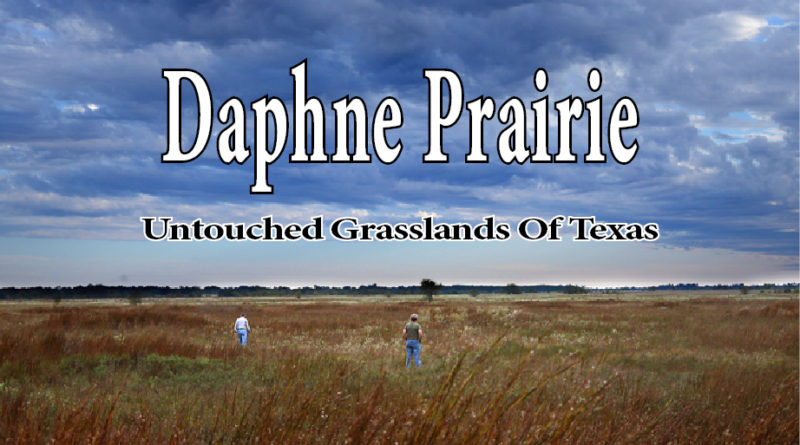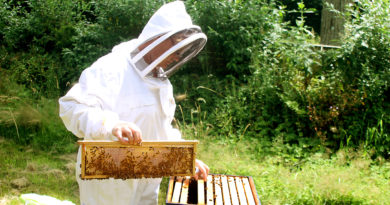Flora & fauna on Daphne Prairie draw diverse life forms to Franklin County
Reprinted from the East Texas Journal June 2016 Edition
By HUDSON OLD
East Texas Journal
DAPHNE PRAIRIE – An artist, in the profusion of life here Deborah Paris sees a metaphor in the cycle of rebirth, something ancient, nearing spiritual, “a simpler vision of ourselves in a younger time.”
Her one woman show, “Daphne: The Intimate Prairie,” will open later this year at the gallery of the Botanical Research Institute of Texas.
Building fence, as he digs down into Daphne’s clay pan Joel Dihle is curious to see how long the cedar posts he cut, split and cured will last. He’s unaccustomed to having trees for the taking, but well acquainted with the concept of payment in sweat to earn what’s needed.
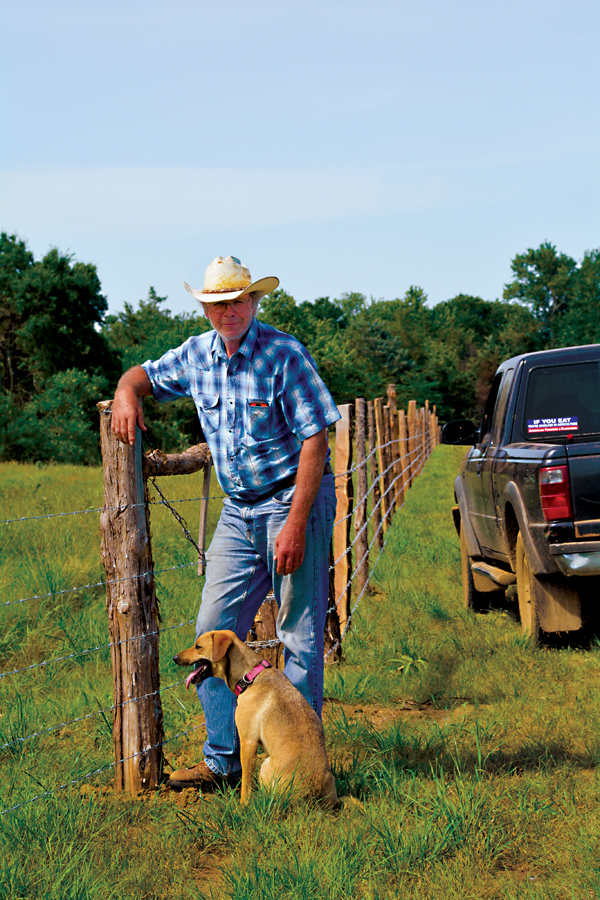
“I like to work,” he said.
He’s cross fencing land he intends to graze, maybe as soon as spring after next.
This land is different.
“In North Dakota,” he said, “you plant a tree and if you can nurture and keep in alive for 30 years, then you’ll have a tree. Here, they grow easy as weeds.”
For the first time in his adult life, he’s in no hurry. From daylight to dark, he savors the lack of urgency.
“It’s a different thing, not having a boss watching over your shoulder,” he said. He’s 66 and fit. Moving into his second summer here, he’s starting again on new land. A suitable house was his wife’s only stipulation to their moving to Texas.

“He’d be perfectly happy living in a tent,” Laurie Dihle said.
This land is a curiosity, causing him to likewise think in different ways.
“In agriculture, there’s a chemical for everything,” he said. “In all the places I’ve been, until seeing this it’s always been about using what’s needed to maximize production.”

It was 1808 before the United States first deployed an agent to explore and report back to Washington on the nature of East Texas land.
Employed under guise of an Indian Agent meandering across land claimed by Spain, Anthony Glass passed through here in the summer of that year.
“The country all along here is much timbered with ash, oak and hickory, interspersed with rich handsome prairies containing from fifty to hundreds of acres,” Mr. Glass wrote in his journal.
Three days later, on July 27 “he described traveling through what is very likely Daphne Prairie,” said Texas naturalist Matt White.
“All this day we passed small mounds innumerable,” Mr. Glass reported. “Elevated five or six feet, they are generally 15 or 20 feet in diameter and rising perpendicularly.”

Those are the Daphne Prairie “mima” mounds that have for a couple of centuries confounded researchers.
“Mysteriously, there are no proven explanations for their existence,” Mr. White said.
Some say they are natural upthrusts, the result of pressures created by a sticky-slick, gummy rich soil that expands and contracts in accordance with moisture content. Others call them gas pockets. It’s been suggested they might be related to ancient methods of cultivation, connected to the labor of Native American farmers.
It’s been several years now since Daphne Prairie’s mima mounds first shocked Texas operatives working in concert with the Nature Conservancy.
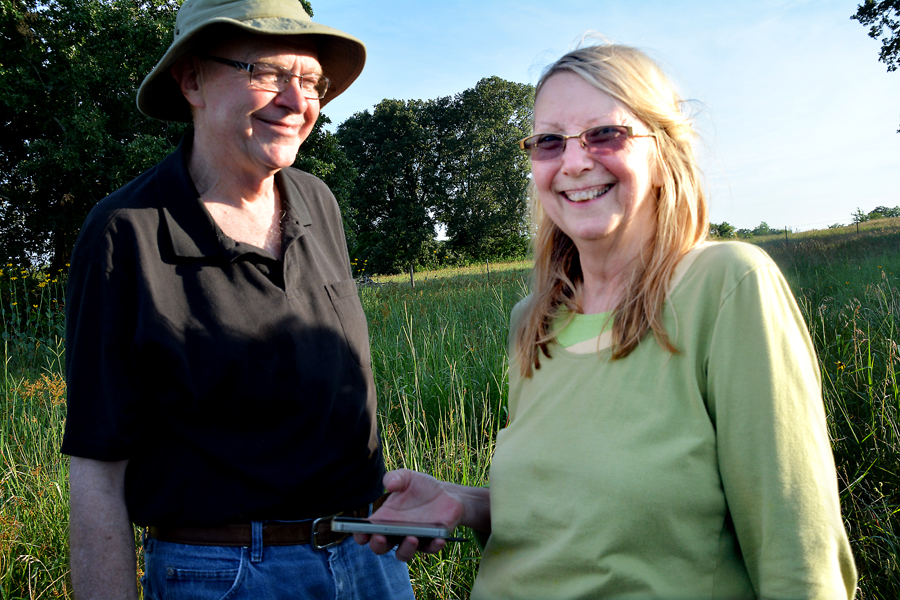
“I was reading an article about prairies and how there are essentially no virgin prairies left,” said Mt. Vernon attorney B.F. Hicks, a seventh-generation owner of land adjacent to the Dihle place. “Jim Eidson with the Nature Conservancy was very skeptical when I first told him that I knew our family history of a Franklin County prairie going back to the 1830’s and that it had never been plowed.”
Beginning with a rep from Paris Junior College, a series of naturalists came to investigate, generating interest culminating with a call from Dr. David Diamond, possibly the only Franklin County visitor ever arriving with a Kansas degree in prairie studies.
“When he said that the property fronting on Farm Road 1896 is unique, I said, ‘that’s nice,’” Mr. Hicks recalls.
“No,” said the Kansas PhD, “I mean it’s unique. This plant mix has been destroyed except right here, where we stand.”

The new Dihle place butts up against the north side of the Hicks property described by Texas Parks and Wildlife botanist Jason Singhurst as a “globally rare Silveus Dropseed Prairie” where he has identified 381 plant species.
“There are a lot of flowers, seas of tiny blooms that come in the spring and keep changing all through the growing season,” said Mr. Dihle, the new arrival again finding himself a student of new land. In the evenings, he relaxes with a 1930’s botany text, searching for whatever new he might have seen that day.
There’s green milkweed, great coneflowers, rough conflowers, prairie blazing star, Indian Paint Brush, ashy sunflower, Barbara’s buttons, compass plant, Samson’s snakeroot, rattlesnake master – the widest varieties he’s found are on 25 of his 155 acres where he finds mima mounds, a primal indicator.
“The unique feature of Silveus Dropseed Prairies is the low, circular mima or pimple mounds,” said Mr. Singhurst. The mounds tell him that the land was never flattened with plowing, never farmed.
It’s Mr. Dihle’s intent to test the value of the same grasses that in ancient times nurtured free-ranging buffalo, seeing how many grazing cattle it might sustain.
“It worked for the buffalo for a thousand years,” he reasons as he thinks through the way he will best harvest seed from his mima mound pasture to re-establish native grasses where the balance of his land was once farmed. Left undisturbed, he imagines forage that will flourish forever in a natural cycle.
He plowed and seeded 50 acres this spring.
According to Texas Parks and Wildlife ornithologist Cliff Shackelford, who has surveyed Daphne Prairie with a mind bent toward its bird habitat, “tallgrass prairie once dominated a chunk of Texas the size of South Carolina.

“In spring, the air would have been filled with the sounds of booming Greater Prairie Chickens and songbirds such as Dickcissels, Blue Grosbeaks and Grasshopper Sparrows. Daphne Prairie is currently one of the last, best and largest examples of tallgrass prairie remaining in all of Texas. It continues attracting Short-eared Owls and the occasional Smith’s Longspur in winter.”
Bring earplugs, he jokes.
“In spring, the competition among male Dickcissels singing on territory is deafening,” he said.
It was after the botanists and the naturalists declared the Hicks family land as a rare treasure that Mr. Hicks committed to its preservation, adhering to the protocol of the Nature Conservancy.
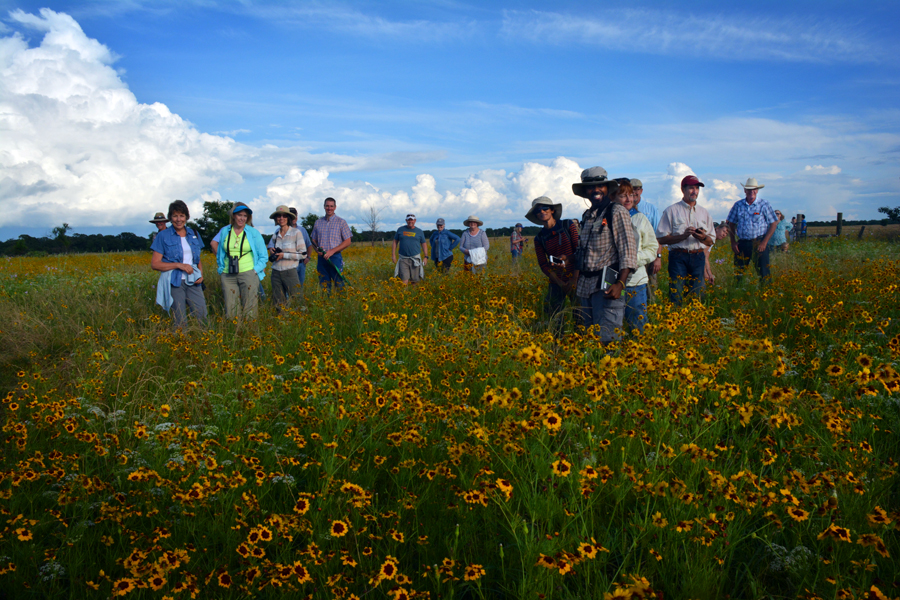
Henceforth, a 900-acre swath of Franklin County, a sliver of the globe, has been committed to the free range of animals, birds, whatever grows and people from mostly out of town willing to drive hours just to stand there.
Joel Dihle’s from Columbus, a town of fewer than 300, half the size of Powers Lake where Laurie graduated with a senior class of 30. Standing 6-5, he stood out on the basketball court when their schools played. Later, they met at a wedding. They married in 1979.
People are thin back in North Dakota, where 756,000 residents make it the fourth-least populous state. Back there, friendships and neighbors are nurtured like trees. After finding land with a suitable house, Joel called in the pros who installed new flooring and built walls of cabinets in Laurie’s new kitchen.
On a half hour’s notice she can have the table set for guests.
“I like to bake,” she said, and she purposely over does it, always having something in the freezer.
Alerted to a busload of guests from the Native Prairies Association of Texas (NPAT) coming for a Saturday tour of the Hicks place, Joel changed jobs. He built raw sawmill pine benches on his flatbed trailer, one of two used to ferry visitors into the wilds.
NPAT members are activists, a tribe of different thinkers who arrived in floppy sun hats. Men past 50 continue to wear their hair long. Relative to the general population, a disproportionate number work in computer industries.
“We may look like hippies, but we’re actually avocational scientists in comfortable clothes,” said Jim Fleischman, a bell helicopter software engineer.
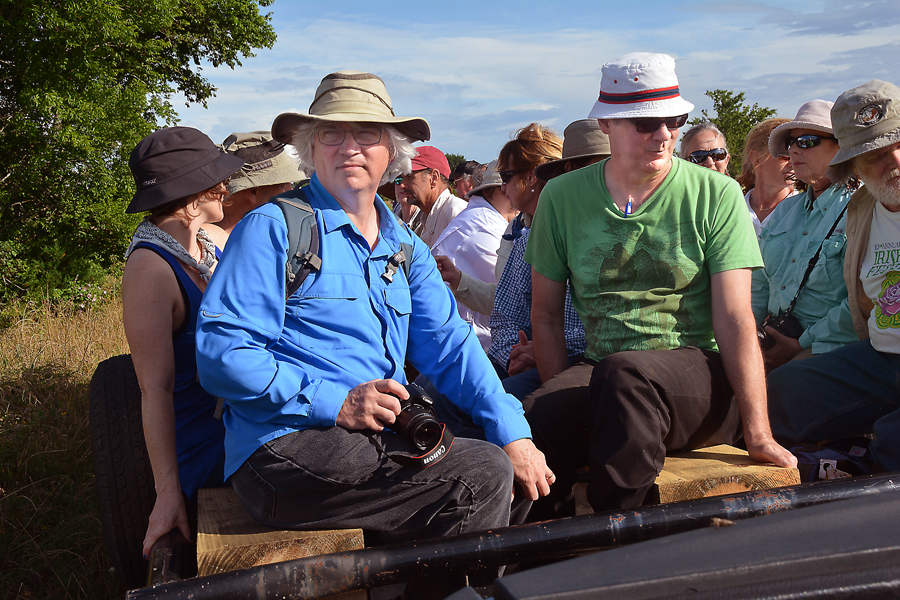
City dwellers bombed into bliss by a hayride, they fanned out over the landscape.
“It is time now to honor and protect our remaining native prairies,” said NPAT Executive Director Pat Merkord. “It is the prairie that has been home to man, supporting our existence with food and energy, since our beginning.”
The five Dihle children are grown and gone. All have college degrees and all but one of the twins have post-graduate degrees.
Preston, 35, is now in military intelligence, a transfer from chemical and biological warfare where he was assigned when he arrived for duty sporting masters in molecular biology. Tyler practices law in a firm in Illinois.
Aimee and Rachel, the twins, are adventurous. With matching degrees in business, they landed career track positions, then walked off in favor of working on a Montana dude ranch.
“The twins,” says their father, “are not restrained by convention.” They became dude ranch gypsies for a while, moving camp with new opportunities.
The pure-bred Frisian horses at one of the ranches arrested Aimee’s attention. Rachel moved to the East Coast after being accepted in a fast-track nursing program at the University of Virginal. Aimee found a stable of Frisian show horses in Virginia and followed Rachel there.
Married with a two year old, Sarah’s masters in counseling landed her at Texas A&M Commerce.
Twenty years after marrying, Mr. and Mrs. Dihle moved to Illinois where he first found work in a feed lot operation. Growing up tending a 200-head hog barn and pasturing sheep and cattle ranging over a couple of thousand North Dakota acres, he drew his last paychecks in Illinois tending sheep.
Finding work has never been a problem.
“There aren’t that many people who know sheep,” he said.
It was after Aimee married and moved to Sulphur Springs that the Dihles came for a visit to Texas. Charmed by Sarah’s 2-year-old Nordic knockout, and with Aimee in nearby Sulphur Springs, they stayed.

Rachel’s back in Virginia, now a nurse working in the university hospital, but Mr. Dihle suspects his free-spirited daughter might have Texas on her mind.
“The twins,” he said, “tend to wind up in the same place.”
During the week, Mrs. Dihle keeps their granddaughter.
“Family,” says the sign on her kitchen wall “is a gift from God.”
Three weeks after the NPAT tour, Mr. Dihle went to work rolling hay, not for winter feed, but for seed heads bedded in the mulch of plant stems that will rot into natural nutrients when he rolls them out to seed his fields.
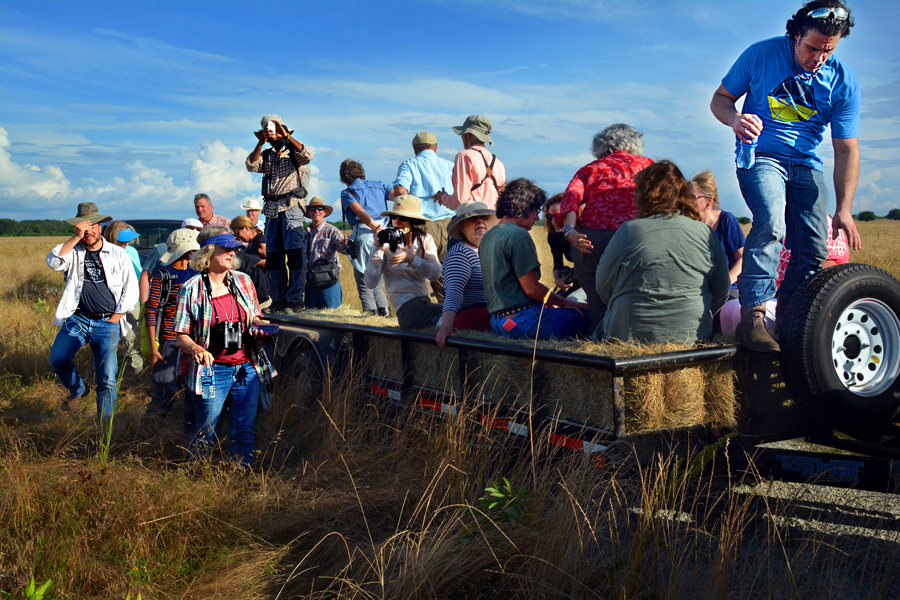
Same as any business, setbacks are part of the game. Last year, a bearing wore out on his first second-hand baler, generated so much heat the thing caught fire and burned down to the frame.
This year, after making a handful of shabby rolls that didn’t suit him, he pulled his new used baler into the shop and spent three days under the hood before finding his problem.
He found a 70’s vintage tractor, an old war-horse Ford. He finds common sense advantages to older equipment.
“It’s easier to work on,” he said. It requires less capital up front, which fits well for a businessman building with no expectation of return during the three years he expects to work re-establishing native grasses.
Making it work means making it pay its way, a proposition he understands.

